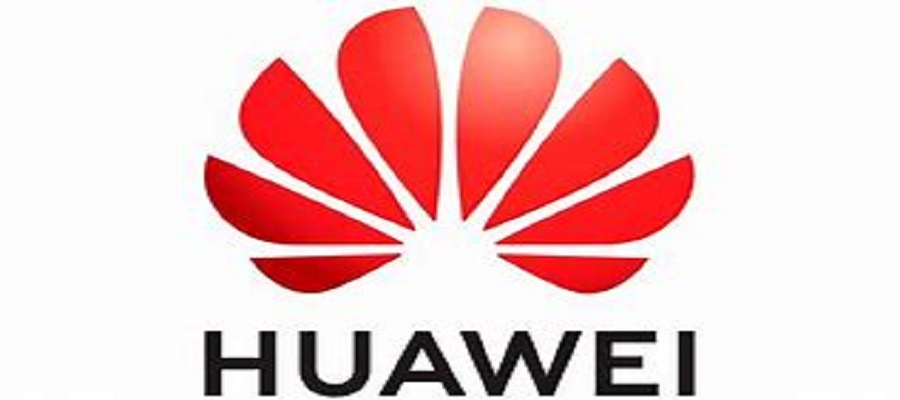E-Business
FG‘s 95% Digital Literacy Target by 2030 will Drive Technology Adoption by Informal Retailers – Alerzo CEO

In support of the remark made by the Minister of Communications and Digital Economy, Prof. Isa Pantami that the country’s march towards attaining 95 percent digital literacy in 2030 now looks more promising than ever, the group CEO of Alerzo, Adewale Opaleye has said the realisation of this target will drive increased technology adoption among informal retailers and micro businesses in the country.

Opaleye noted that there was a need for informal retailers and micro businesses to key into the federal government’s 95 percent digital literacy projection for 2030 as contained in the National Digital Economy Policy and Strategy (NDEPS), 2020 – 2030.
He corroborated the minister who maintained that ICT was not just an independent sector but the key enabler in trade, investment industry and other sectors. He further stressed that technology will help informal retailers in running their businesses with ease and make more profits.
Digital literacy is needed to harness the innovative solutions brands like Alerzo and other B2B tech firms are providing to the age-long challenges that informal retailers experience which includes restocking, logistics, bookkeeping, etc.
Alerzo’s unique proposition involves meeting the needs of informal retail businesses at their comfort. These thousands of retailers being serviced by Alerzo are not challenged with running out of stock nor stepping out of their stores to restock as they easily place orders for groceries on Alerzoshop app and receive deliveries within a maximum of four hours, while also receiving and making payments with the Alerzo POS terminal.
Veedez, another product of Alerzo, a bookkeeping and inventory management app, helps retailers to calculate their profits, track their stock and get prompts on goods with low inventory.
Opaleye further stated: “Informal retailers need to move away from the old ways of doing business to embracing technology. To provide a solution to the problem of logistics, we did something unthinkable by buying a fleet of vehicles and owning our warehouses.
“We also developed our software, we do deliveries within four hours of order because we own our entire vehicles. We ended up building a bank of solutions for our retailers.”
While harnessing the benefits of digital literacy through the federal government’s vision, there’s no doubt that this will drive an array of innovative Nigerian products that are affordable.
E-Business
Attackers Target Employees with Fake HR Updates

Kaspersky has identified an advanced phishing campaign targeting employees with personalised emails and attached documents disguised as HR policy updates.

This campaign marks a significant escalation in phishing tactics, with attackers tailoring not only the email body, but also the attachments by addressing individual recipients, showcasing an unprecedented level of customisation. The goal was to lure the victim into entering their corporate email credentials.
The attackers likely prepared by parsing employee names to make the campaign targeted and more convincing.
The emails feature a deceptive body: a fraudulent “verified sender” badge to build trust, the recipient’s name, and an invitation to open the attached file to review remote work protocols, benefits administration and security standards. However, the whole email body is in reality just an image with no real text in it; this is done to bypass email filters.
The attached document, posing as an updated “Employee Handbook,” does not contain any actual guidelines – only a title page, a table of contents with the items that have supposedly been changed highlighted in red, a page with a QR code, supposedly for going to the full document and common instructions on how to read QR codes using a phone. The document features the victim’s name multiple times to convince that this document was created specifically for them.
If the victim scans the QR code and follows the link, they land on a fraudulent page where they are asked to enter their corporate credentials, which is what the attackers are hunting for.
“This campaign demonstrates a new level of sophistication in phishing attacks, and we may be seeing a new mailing automation mechanism that generates a separate attached document and a separate image for the email body for each recipient.
“This tactic allows to scale the attack and at the same time possibly evade traditional defenses. Organisations must prioritise advanced security measures and employee education to stay ahead of these threats,” comments Roman Dedenok, Anti-Spam Expert at Kaspersky.
E-Business
Temu Joins INTA to Combat Counterfeits and Elevate IP Standards Worldwide

Temu, the global online marketplace, has joined the International Trademark Association (INTA) as a corporate member and serves on its Anti-Counterfeiting Committee.

INTA is a global association that brings together more than 6,700 organizations, representing over 37,000 trademark professionals and brand owners across 181 countries. By joining INTA, Temu deepens its commitment to building a trusted online marketplace and advancing global IP protection through broader, cross-industry collaboration.
“INTA welcomes TEMU’s willingness to engage in anticounterfeiting initiatives, including in the Association’s annual Anticounterfeiting Workshop and Online Takedown Certificate Program which serve to share best practices and connect stakeholders,” said Alastair Gray, Director of Anti-Counterfeiting, INTA. “Constructive collaboration with these efforts can contribute to the protection of intellectual property rights for INTA members and support the removal of counterfeit products from the platform which ultimately protects consumers.”
At the 2025 INTA Annual Meeting held in San Diego in May, Temu participated in the Anti-Counterfeiting Committee Roundtable, serving as a moderator to facilitate discussions among brand owners, online platforms, and government officials on emerging technologies, best practices for collaboration, and strategies to strengthen global anti-counterfeiting efforts.
“Joining INTA and serving on its Anti-Counterfeiting Committee reflects Temu’s ongoing commitment to ensuring a trustworthy online shopping experience,” said a Temu spokesperson. “We value collaboration with industry peers and stakeholders and are dedicated to advancing collective efforts in intellectual property protection.”
Temu also participates in INTA-led online workshops, including the Online Platform Notice and Takedown Certification Program, which outlines the latest procedures and best practices used by e-commerce platforms and social media companies. These workshops aim to enhance the quality and accuracy of rights-holder notices, promoting more effective takedown processes and content moderation.
Since launching in 2022, Temu has made significant investments in IP enforcement. Its measures include comprehensive seller vetting and compliance training, 24/7 algorithmic monitoring with manual review, a dedicated IP protection portal and brand registry to streamline takedown submissions, and an internal enforcement team that handles claims with speed and accuracy.
E-Business
Huawei Unveils AI Computing System to Challenge Nvidia’s Flagship Product

China’s Huawei Technologies unveiled an AI computing system on Saturday that an industry expert said rivals Nvidia’s most advanced product, as the company aims to expand its footprint in the country’s booming AI sector.

The CloudMatrix 384 system made its public debut at the World Artificial Intelligence Conference (WAIC), a three-day event in Shanghai, attracting a large crowd to Huawei’s booth with its showcase of cutting-edge AI innovations.
The system has attracted significant interest from the global AI community since Huawei (HWT.UL) first introduced it in April. Industry analysts see it as a direct challenger to Nvidia’s GB200 NVL72, the most advanced system-level offering currently available from the U.S. chipmaker.
In an April article, Dylan Patel, founder of semiconductor research firm SemiAnalysis, stated that Huawei now possesses AI system capabilities that could surpass those of Nvidia.
Huawei staff at its WAIC booth declined to comment when asked to introduce the CloudMatrix 384 system.
A spokesperson for Huawei did not respond to questions.
Huawei has become widely regarded as China’s most promising domestic supplier of chips essential for AI development, even though the company faces U.S. export restrictions.
Nvidia CEO, Jensen Huang told Bloomberg in May that Huawei had been “moving quite fast” and named the CloudMatrix as an example.
The CloudMatrix 384 system features 384 of Huawei’s latest 910C chips and, according to SemiAnalysis, surpasses Nvidia’s GB200 NVL72 in certain performance metrics, despite the latter using 72 B200 chips.
SemiAnalysis attributes this performance advantage to Huawei’s strong system design, which offsets the lower power of individual chips by leveraging a greater number of them and incorporating system-level innovations.
Huawei describes the system as utilizing a “supernode” architecture that enables ultra-high-speed interconnectivity between chips.
In June, Zhang Pingan, CEO, Huawei Cloud confirmed that the CloudMatrix 384 was already operational on Huawei’s cloud platform.

 E-Financial2 days ago
E-Financial2 days agoUnion Bank Rewards Customers with ₦5 Million Each in Save and Win Palli Promo Season 4 Grand Finale

 E-Business2 days ago
E-Business2 days agoHuawei Unveils AI Computing System to Challenge Nvidia’s Flagship Product

 E-Financial2 days ago
E-Financial2 days agoEdun, Finance Minister Inaugurates NDIC New Management

 News2 days ago
News2 days agoLawyers Drags NLS to Court for Alleged Election Fraud, Data Violation

 Telecom1 day ago
Telecom1 day agoGlo Boosts Network Capacity for Enhanced Customer Experience

 General News2 days ago
General News2 days agoNew Tax Law Empowers NRS to Fine Offenders up to N10m

 News1 day ago
News1 day agoTranscorp Power Posts Strong Half-Year Profit, Declares ₦11.25Bn Dividend

 Broadcasting2 days ago
Broadcasting2 days agoCourt Upholds AVRS Legal Rights to Licence Audiovisual Works in Hotels



























